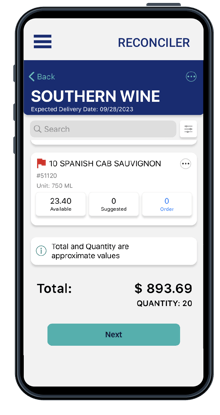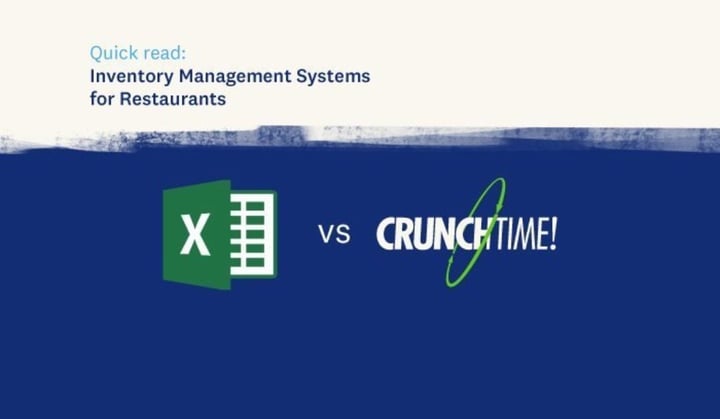
- Home
- Crunchtime Blog
- Three Ways to Improve Your Inventory Management as You Scale

Three Ways to Improve Your Inventory Management as You Scale
Your inventory management operations play a critical role in how well you optimize and maintain your food costs. As your restaurant grows and your inventory becomes more complex, it can be harder to maintain the level of inventory management efficiency you had at a smaller scale. However, following these three basic best practices will go a long way towards maintaining efficient inventory management and optimizing food costs at any size.
1. Count and weigh whatever you receive
Vendor management is a critical component of inventory and food cost management. You should always know what you're getting. Even if the quantity is correct, you may still have been charged more than the agreed price. When you aren't methodically counting what you have received and checking pricing, you could miss a discrepancy. Then your numbers are off and decisions based on what you think your inventory is (both count and cost) could be the wrong ones.
Managing your vendors is a critical component of food cost management. You should always know what you're getting.
Being meticulous with inventory counts can be time consuming, and operators always have a million things to do. This is why it's imperative that you have the best inventory counting tools. Using your mobile device to scan and count inventory and then seamlessly integrating that data with an inventory management platform can allow you without taking up too much time.
2. Never order too much (or too little)
If you buy more than you need, you immobilize cashflow and increase the risk of spoilage and food waste. If you don’t buy enough, you could put your kitchen and waiting staff under unnecessary stress, which in turn may affect both the employee and guest experience.
Like most things in life, there is a fine line between having the right amount or having too much or too little. The optimal quantity ensures that you don't waste any inventory and you don't run out. Suggested ordering is a critical component of inventory management for this very reason. It simplifies ordering at the store level with system-generated orders based on par levels, historical consumption patterns, sales forecasts, and on-hand inventory levels. This allows you to have optimal quantities at all times.
Crunchtime users can place inventory orders directly on the Reconciler mobile app
3. Automate whenever you can
The most effective way to save time while minimizing mistakes is to integrate your inventory data with processes that are automated and optimized for performance. Automated sales forecasting can generate inventory projections based on historical data, which affects inventory replenishment. Automated ordering creates and transmits vendor orders based on delivery schedules, order frequency, forecasts, historical consumption patterns, and par levels. Automated receiving can efficiently load vendor orders into the inventory when they conform to preconfigured parameters.
Entrust your restaurant technology to do what it does best. With proper settings and accurate data, your inventory management platform can execute a number of important tasks with the utmost precision and efficiency. This saves time and maintains you inventory functions at a high level - optimizing food costs - even as you scale.
Share this post
Related


The Intrinsic Value of Automation in Restaurants

